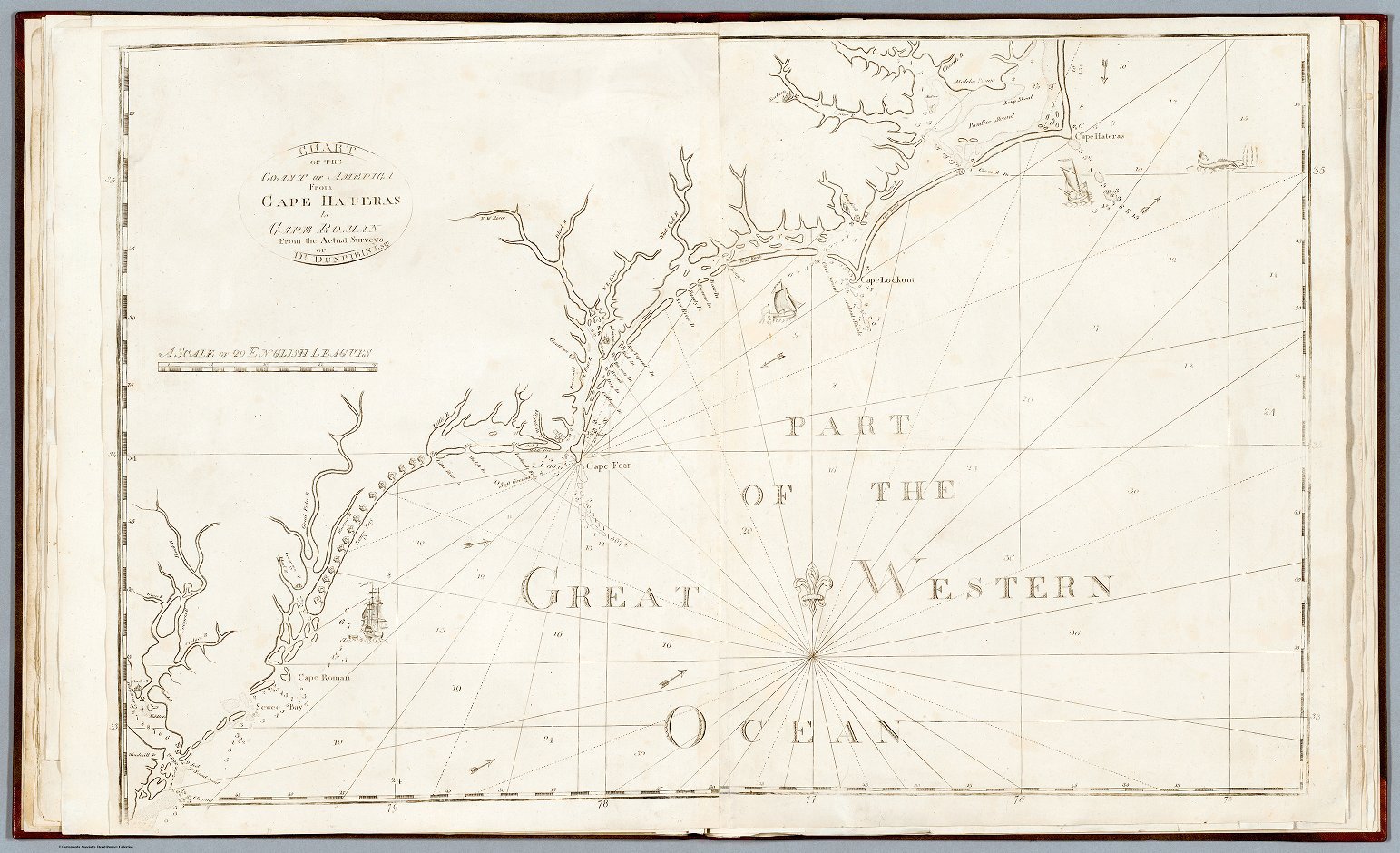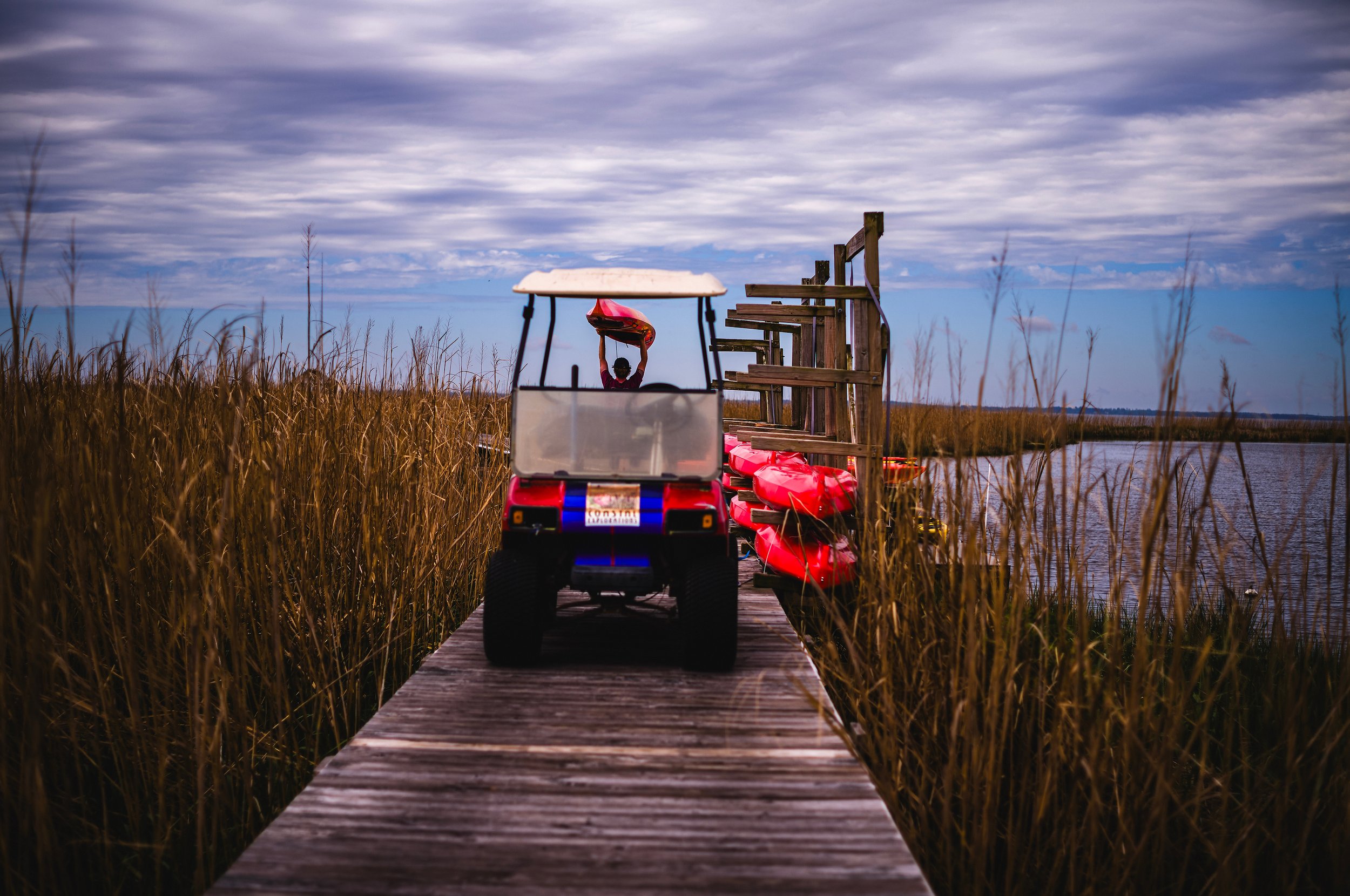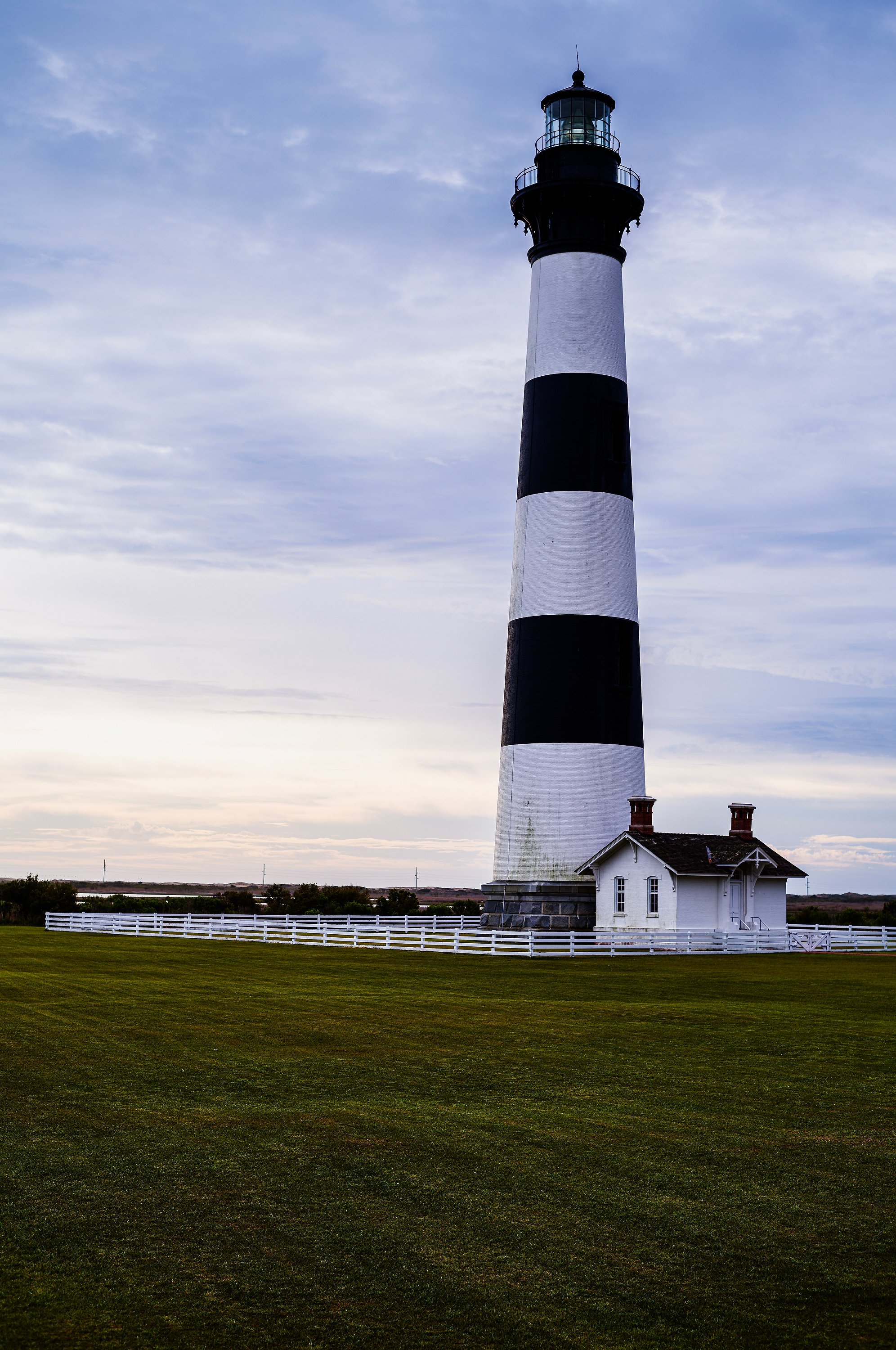
The Outer Banks
Explore the Outer Banks, where the notorious 'Graveyard of the Atlantic' prompted the creation of iconic lighthouses, each a beacon of maritime history. From Currituck Beach's red-brick sentinel to the quaint Roanoke Marshes Lighthouse, these structures are not just navigational aids but monuments to coastal resilience and ingenuity. Their distinctive designs and advanced technologies, such as the Fresnel lens, revolutionized maritime navigation. Discover a rich narrative that intertwines with the very fabric of the Outer Banks, inviting you to uncover a past as deep and stirring as the waters they overlook.
You’ve been everywhere else but here.
Cape Hatteras National Seashore

OFF THE GRID // Driving East along N.C. 64 towards Cape Hatteras, the western most approach to the Outer Banks.
Entering the Twilight Zone with Nights in Rodanthe
“If my enemies saw me walk on water, they would say I couldn’t swim”
- Margaret Thatcher.
Driving East along N.C. 64 towards Cape Hatteras, the western most approach to the Outer Banks does indeed feel like walking on water - or at least driving a car in places only a boat should go. Walk, drive, kayak - it doesn’t really matter your mode of transport, making your way to the best spots on the Outer Banks is going to take some time.
In the duration of such time, your confusion over the late Prime Minister’s quote will become instantly clear (The Outer Banks are in the middle of the Atlantic Ocean). Idiots home or abroad aside - I have an unpopular opinion to share: the best time to visit the Outer Banks is in the early spring. I recently ventured to all five outer banks lighthouses in a confused quest to come full circle on appreciating the innumerable amount of lighthouses I was dragged to as a child under the guise of vacation.
What I learned along the way should have you packing your bags to drive east, just literally as far east as you can get. As you finally complete the suspension shocking, brain jostling road conditions that represent the last few miles of bridges on N.C. 64, make a right and head south towards Rodanthe. My preferred home base for the start of any OBX journey are the small communities of Waves and Rodanthe. Two of my three favorite campsites on the East Coast are within a 20-minute drive, and the best Airbnb I’ve stayed at in years is a link you are going to want. Until you make that decision, for now I’ll toss you a freebie - the Waves Market is legendary. You will not find a better convenience store, market, and deli counter on the island.
Traveling the roadways of the Outer Banks can be a unique experience depending on what combination of high winds, flooding, and near-constant road maintenance is taking place on any given day. (Read: bulldozers pushing sand back in places nature doesn’t want it).
Houses for rent are abundant in the OBX, but the premier beach and ocean view often comes paired with sticker shock. What’s more troubling is that I didn’t see too many sticker-shock houses I actually wanted to rent (because we all know you can’t buy taste). If you’re up for non-traditional accommodation, the ability to find the perfect view without breaking the bank is more than possible here. In the last three years, I’ve camped and rented houses twice in and around Rodanthe and I’m already planning my return for next spring. One particular campsite (and I do mean a single location) is so good, reservations are needed many months in advance.
Waterfront views are not easy to come by in the OBX for camping or RVing unless you’re brave enough to drive directly on the beach (hell no I’m not - and my truck has more four-wheel-drive technology than you can shake a stick at.) Don’t let that fool you into thinking a five figure house rental is the only or last resort. I didn’t have to break the bank to sleep at my favorite place. As you may be familiar with by now, the inspiration around here is free, but the GPS coordinates and links to my favorite actual places to lay your head are coin operated. Head over to the members-only Travel Library to find three of my top campgrounds in the USA and perhaps the best Airbnb in Rodanthe, if not all of the OBX.
On Timing //
I did tell you I had an unpopular, early spring preference for the OBX, and I’m happy to explain myself. First, I can understand why you’re questioning my off-season (or at worst, quite early-season) arrival, but hear me out. What you lose out on by visiting early in the year - closed businesses, reduced hours at most businesses still open, and an overall feel of being alone on a deserted island - are all things I consider to be strengths.
That’s because I know the Outer Banks are not the same as, say the Florida Panhandle. I’m not expecting the same prices, accommodation, or infrastructure. These islands simply don’t support them. They really are not so much islands as they are constantly moving sandbars that naturally protect North Carolina’s eastern shore from the millennia of hurricanes they have been exposed to.
The pros of arriving this time of year may not excite you as much as they do me, but think about no traffic! That lack of congestion on the islands limited roadways means you can move around at your heart’s content. Anyone who’s ever been stuck in a traffic jam attempting to catch the Ocracoke ferry knows what I’m talking about. If you’re looking to maximize sightseeing and cover a lot of ground without wasting time in traffic, this is the time of year to come.
If you’re worried about being alone on a deserted island… well that’s half the allure of coming this time of year. It doesn’t take a master’s degree in economics to realize the businesses that are open year-round are probably the ones you want to go to in the first place. They’re either so successful it doesn’t make financial sense to shutter them in the off-season, or more likely, run by locals and year round residents. Is there any place else you would want to spend your tourism dollars? Didn’t think so.
On History //
The Outer Banks are in constant motion, shifting and reshaping under the influence of wind, waves, and weather. The islands' mobility can be observed through both subtle and dramatic changes. Erosion and accretion, the wearing away and building up of land, respectively, give these islands their ever-changing character. Some areas have experienced average annual shoreline change rates of over 12 feet, an astonishing figure that reveals the fluid nature of these sandy barriers.
Major storms have left indelible marks on the Outer Banks, transforming the landscape overnight. Hurricane Isabel in 2003, for instance, created a new inlet on Hatteras Island, a vivid reminder of the islands' vulnerability and adaptability. Such events capture headlines but also underscore the intricate balance that governs these fragile ecosystems.
On Lighthouses//
Human interventions add a layer of complexity to the islands' movement. Efforts to stabilize the shoreline, such as seawalls and jetties, often yield mixed results. The Cape Hatteras Lighthouse's inland move, prompted by the shifting shoreline, illustrates the profound challenges of preserving historical landmarks amid the islands' natural flux.
With coastal waters dubbed the "Graveyard of the Atlantic" due to the high number of shipwrecks, the Outer Banks' lighthouses were constructed in response to an urgent need for navigational aids. Their distinctive designs and advanced technologies, such as the Fresnel lens, revolutionized maritime navigation. Each has its own history, reflecting the evolution of coastal life, commerce, and the enduring quest for safety at sea over the last 200+ years.
Join the members-only Travel Library
“I heard most of the advice was bullshit”
“Bad writing - some of the spots are legit”
“Just a list of expensive hotels and places to sleep in your truck”
LIGHTHOUSES OF THE OUTER BANKS
from North to South
| CLIMBING THE LIGHT // CURRITUCK BEACH, N.C.
Currituck Beach Lighthouse // Completed in 1875, this striking brick sentinel fills a once-dark void along a hazardous 80-mile stretch of the North Carolina coast known as the "dark spot." Designed by Dexter Stetson, who also supervised the construction of the Cape Hatteras Lighthouse, the lighthouse's unique unpainted red brick facade allows it to stand out from its coastal siblings. Standing at 162 feet, it is equipped with a first-order Fresnel lens that was state-of-the-art for its time. Though automated in 1939, the original lens is still in operation today, a glowing testament to historical maritime innovation.
The preservation of the lighthouse has not been without its challenges. After years of neglect following automation, a nonprofit group, Outer Banks Conservationists, took over its care in 1980. Through dedicated restoration and fundraising, they breathed new life into this piece of maritime history, opening it to the public and ensuring that it continues to guide vessels safely along the Outer Banks. The ongoing care for this historic structure exemplifies the strong ties coastal communities have to their nautical heritage, keeping alive a tradition that transcends generations. For $12, the climb to the top is all yours and would be a mistake to miss.
Spotlight // lighthouse technology
Roanoke Marshes Lighthouse //
Unlike the other towering lighthouses along the Outer Banks, the Roanoke Marshes Lighthouse stands on a pier in the town of Manteo. This screwpile lighthouse, characterized by its cottage-style architecture, is a faithful replica of the original 1877 lighthouse that once guided mariners in Croatan Sound. Though the original was decommissioned and lost to decay, the recreation, completed in 2004, offers a unique glimpse into 19th-century lighthouse design. Rather than soaring above the landscape, it provides an accessible and intimate experience, reflecting the town's commitment to preserving the maritime heritage of the region. Visitors can explore both the lighthouse and the adjacent Roanoke Island Maritime Museum, delving into the coastal history that shaped North Carolina's Outer Banks.
Bodie Island Lighthouse //
Distinguished by its striking black-and-white horizontal stripes, this lighthouse stands 156 feet tall, watching over the perilous Oregon Inlet. Completed in 1872, it is the third structure to bear the name, with previous iterations falling victim to poor construction and the ravages of the Civil War. Its guiding light, magnified by a Fresnel lens, serves as both a navigational aid and a symbol of resilience in the face of adversity.
Surrounded by marshes teeming with wildlife, it offers not only guidance to mariners but also a rich exploration ground for nature enthusiasts. Visitors who make the climb to the top are rewarded with breathtaking panoramic views of the surrounding landscape. With restoration work completed in 2013, the lighthouse is open to the public, bridging the region's maritime past with its vibrant present.
Cape Hatteras Lighthouse //
At an impressive height of 210 feet, this lighthouse is known as the tallest brick lighthouse in North America, serving as a beacon for ships navigating the treacherous Diamond Shoals. Erected in 1870, it has weathered storms and shoreline erosion, a testament to the enduring engineering of its time. The distinctive spiral pattern of black and white stripes ensures its visibility both day and night.
The lighthouse's history is marked by a remarkable feat of engineering in 1999, when it was moved 2,900 feet inland to protect it from the encroaching sea. This relocation preserved not only a vital navigational tool but also an iconic symbol of North Carolina's maritime heritage. Visitors to the site can climb the 257 steps to the top, where they are met with unparalleled views of the Atlantic Ocean and the Outer Banks, making it a must-visit landmark for both history buffs and adventure seekers.
Ocracoke Lighthouse //
Constructed in 1823, this modest yet historically rich lighthouse stands at 75 feet, overseeing the waters of the Pamlico Sound. As the oldest operating lighthouse in North Carolina, it has served as a navigational guide for nearly two centuries. Unlike many of its counterparts, it has never been rebuilt, retaining much of its original structure and whitewashed exterior. Its enduring presence marks the passage of time, connecting modern mariners to the nautical traditions of the past.
Though not as imposing as some of its siblings along the coast, the Ocracoke Lighthouse's significance lies in its resilience and continuity. With a light that can be seen up to 14 miles away, it has dutifully guided countless vessels through the shifting channels of Ocracoke Inlet. Over the years, the surrounding village has grown, yet the lighthouse remains an unaltered sentinel, reflecting a community deeply rooted in its maritime heritage.
















